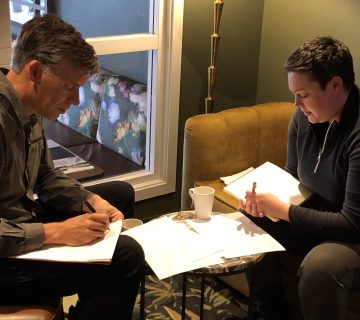How a 1970s early gamification model was used to create a wildlife recording booklet to encourage citizen science using healthcare funding.
As a child growing up in England in the ‘70s, the series of books that really got me engaged in the world around me (and particularly my interest in nature) was the I-Spy books. These little spotter books took a single subject and gave simple information and identification about the topic, assigning a score of points to each item/species. The more difficult things to see scored higher, and the more common earned fewer points. This was an early form of gamification and was hugely successful, especially if you managed to score the magic 1,000 points which entitled you to win a badge!
In the summer of 2020, the project I work for (The CANN project www.thecannproject.org) was offered some funding through the Covid-19 Keep Well budgets of the County Monaghan Library Service to encourage healthy outdoor activities. Using the I-Spy model, I developed a guide to the wildlife of a particular range of mountains called Sliabh Beagh in County Monaghan, Ireland.
First, I divided the biodiversity of the region into four categories: birds, terrestrial animals, insects, and plant species, then within these categories chose a variety of five species – some rare, some common – that could be seen by someone walking within their 5 or 10km limit from home while minding their mental and physical health during the pandemic.
This was only a free pocket booklet, so we were limited to how many species we could choose, but this served as an introduction to citizen science and the importance of biodiversity recording of all species, not just those featured. Links to further resources, book titles, Facebook groups etc., were also given to encourage further exploration.
Each species page was illustrated with a photo and a simple bullet-pointed list of characteristics, from habits to appearance. In addition, the birds were accompanied by a QR code linked to recordings of calls and songs on various websites. Feedback showed that this was a popular feature. The other species were also accompanied by a pop-out box “Did you know?” which varied from poetry excerpts to recipes to mythology and legends.
We published the booklet as a hard copy and hosted it online as a flipbook here https://issuu.com/monaghancountylibraries/docs/sliabh_beagh_book_website. Initially, we printed 1,000 copies and distributed them to primary schools in the County, but within four weeks, there was enough demand for a reprint of 5,000 copies for distribution through the libraries. In support of the booklet’s publication, a local artist painted the front windows of all the branch libraries with species from the project. We also ran themed mountain school days for many of the 50+ primary schools in the county.
This highly successful project showed that you can take funding from the most unlikely of places (in this case, for providing advice to keep people healthy in a pandemic) and use it to interpret your story in a unique manner.
Abby McSherry works for Newry, Mourne and Down District Council, the lead partner in the CANN project. The CANN project is funded through the European Union’s INTERREG VA programme managed by the SEUPB. Abby can be contacted at: abby.mcsherry@nmandd.org.
To cite this article: McSherry, Abby (2021) ‘Health funding to gamify a heritage project’ in Interpret Europe Newsletter 4-2021, pg.25
Available online: https://interpret-europe.net/wp-content/uploads/2021/12/Newsletter-Winter-2021.pdf




